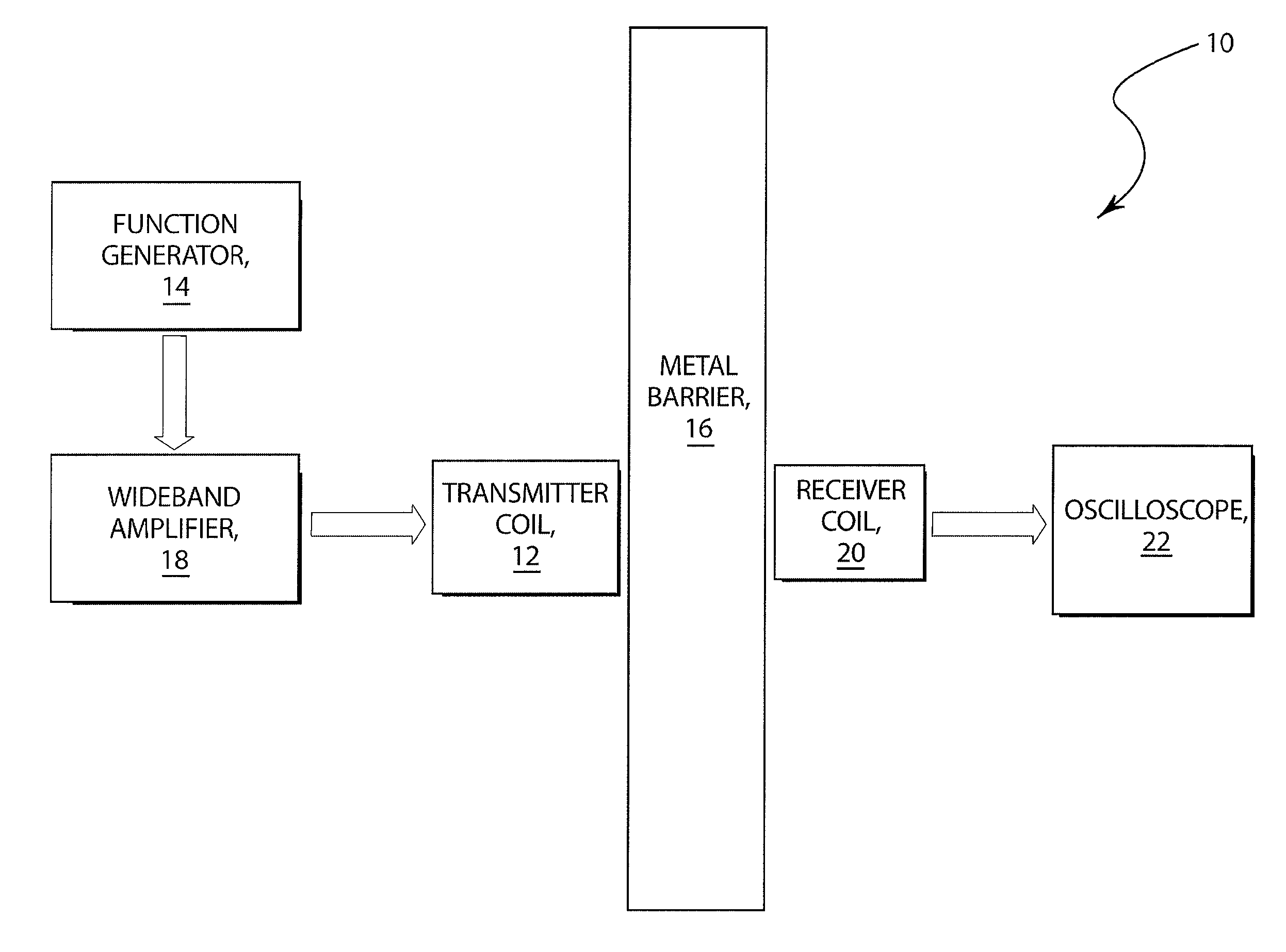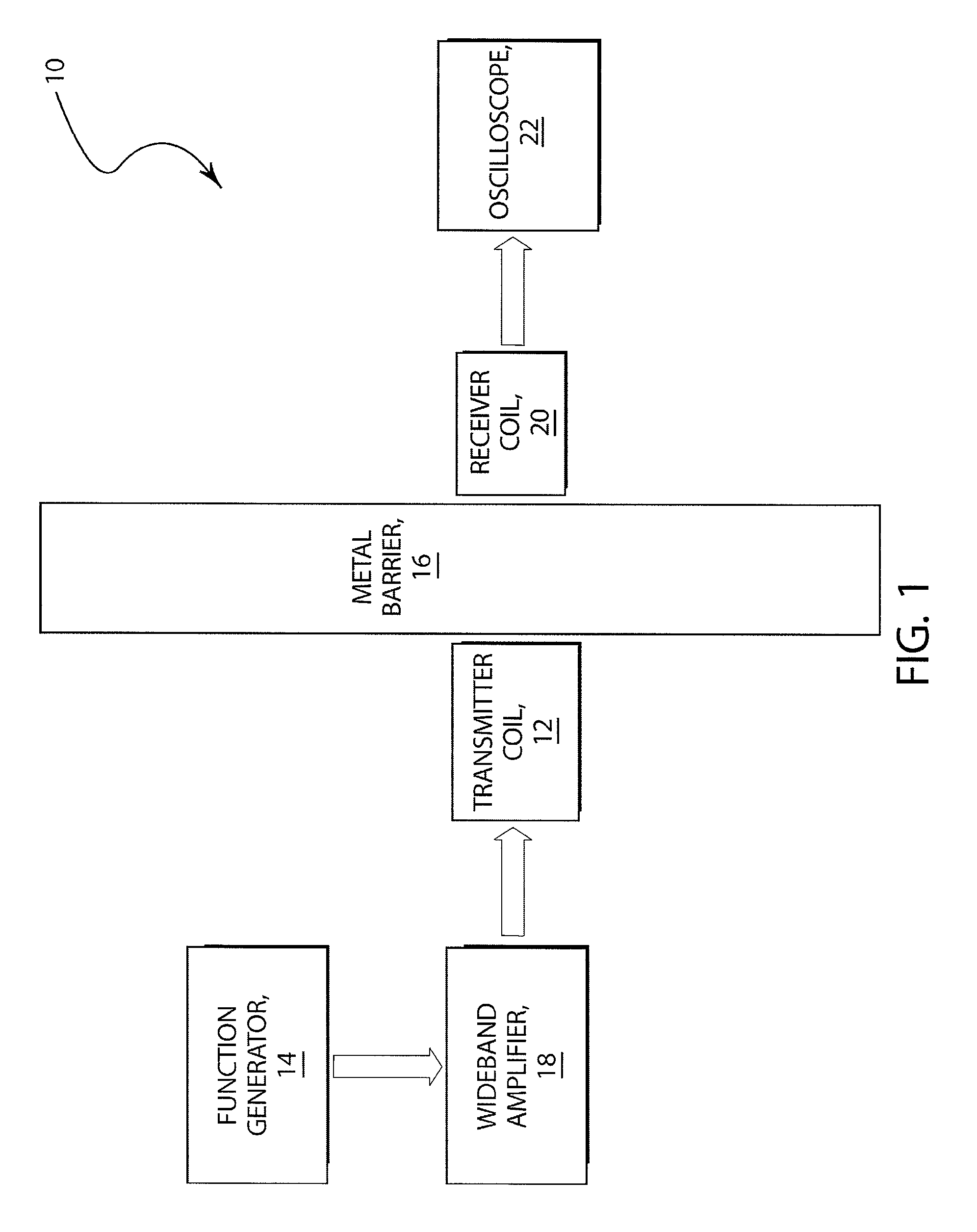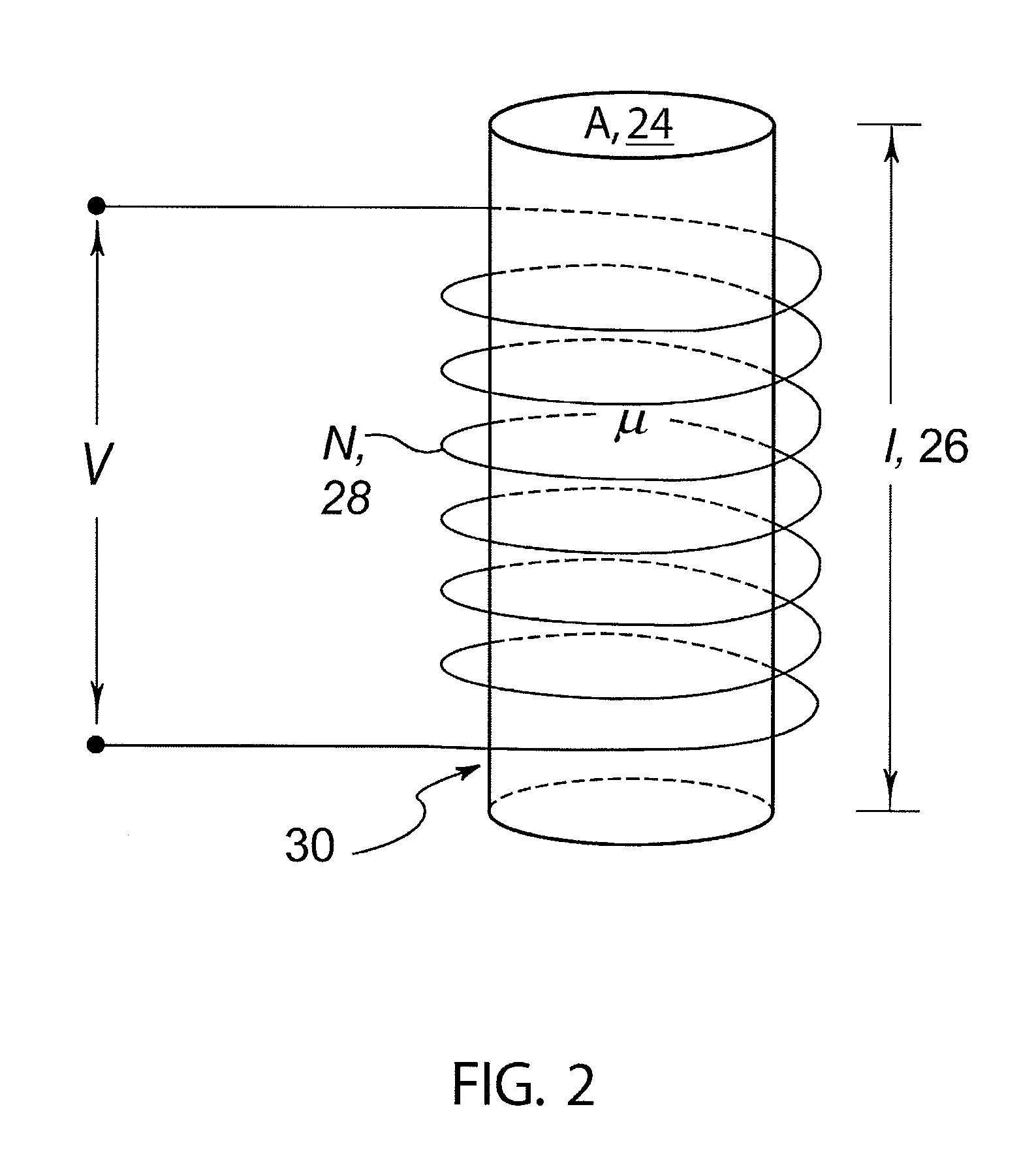Magnetic communication through metal barriers
a metal barrier and magnetic communication technology, applied in the field of wireless communication, can solve the problems of inability to use traditional wireless data communications technologies in most applications, inability to work in most applications, and blockage or heavy attenuation of rf signals, so as to increase data security and data-rate communications. the effect of communication
- Summary
- Abstract
- Description
- Claims
- Application Information
AI Technical Summary
Benefits of technology
Problems solved by technology
Method used
Image
Examples
example 1
[0037]FIG. 5 is a graph of the response of the present apparatus defined as the ratio of the output voltage to the input voltage (upper curve), as a function of frequency for a 0.875″ thick, grounded slab of stainless steel. A signal voltage of 12 V rms and 0.145 A rms (1.43 W total power), was found to provide good signals in the receiver coil. A 3″ thick metallic barrier of similar material to that used as the pressure hull of Los Angeles class submarines was also shown to allow magnetic field transmission. The lower curve of FIG. 5 represents the noise floor for the apparatus employed.
example 2
[0038]FIG. 6 is a graph of the response of the present apparatus defined as the ratio of the output voltage to the input voltage (upper curve), as a function of frequency for a 0.125″ thick, grounded slab of 5086 aluminum. The lower curve of FIG. 7 represents the noise floor for the apparatus employed.
example 3
[0039]FIG. 7 is a graph of the response of the present apparatus defined as the ratio of the output voltage to the input voltage (upper curve), as a function of frequency for a grounded, 0.45″ thick slab of glass fiber reinforced polymer comprising three approximately equal thickness layers. It is believed by the present inventors that the increase in response at higher frequencies is likely an artifact of the measurement apparatus. The lower curve of FIG. 7 represents the noise floor for the apparatus employed.
PUM
 Login to View More
Login to View More Abstract
Description
Claims
Application Information
 Login to View More
Login to View More - R&D
- Intellectual Property
- Life Sciences
- Materials
- Tech Scout
- Unparalleled Data Quality
- Higher Quality Content
- 60% Fewer Hallucinations
Browse by: Latest US Patents, China's latest patents, Technical Efficacy Thesaurus, Application Domain, Technology Topic, Popular Technical Reports.
© 2025 PatSnap. All rights reserved.Legal|Privacy policy|Modern Slavery Act Transparency Statement|Sitemap|About US| Contact US: help@patsnap.com



